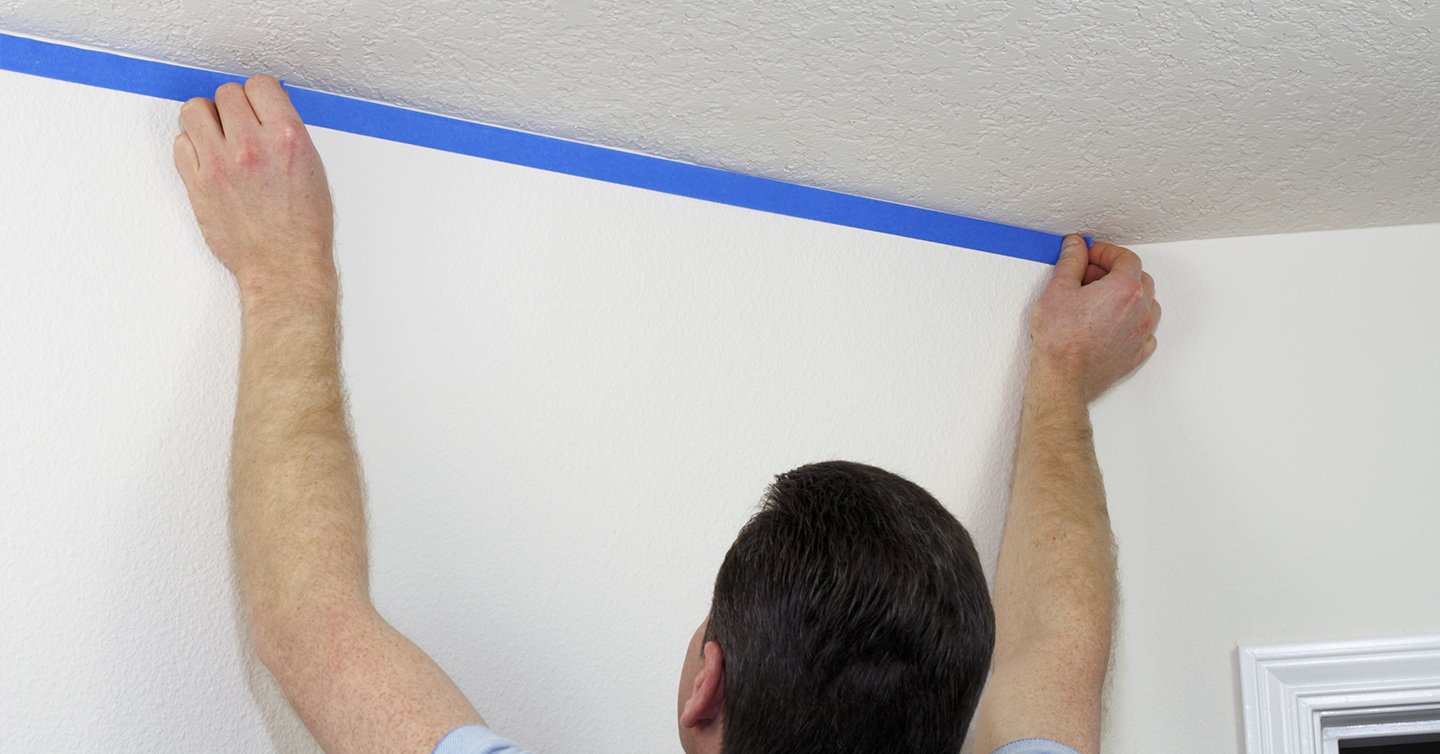Table of Contents Show
DIY homeowners and professional painters alike would love to be able to just ‘grab the brush and go‘ when applying a new coat.
However, for the quality of the project as a whole, there is a fair amount of prep work to be done before putting the color to the canvas.

One part of prep work in which the necessity of is debated all the time is the battle of masking vs. cutting.
Do you take the time to mask (tape) off the trim and other borders to make the actual painting part that much more convenient (faster)?
Would you rather cut (use a small paintbrush near features) which can be quicker, but also risks splatter on expensive trim and molding?
Which method you use can depend on the room layout, your experience, your timeline, and more.
Some painters switch how they prep a room depending on the job, others both mask and cut for optimum efficiency. Let’s break this debate down into a bit more detail:
Read Also:
- Color Schemes for Houses: A Complete Guide to Choosing Paint Colors
- Top 5 Tips to Make Your Home Look Expensive and Luxurious
- How to Pick Paint Colors That Are Great for Your Home
- 5 Outdated Bathroom Fixtures That Paint Will Fix
- Reasons to Paint Your Home Exterior
- How to Paint a House Like a Pro
- DIY Home Repaint in 2020
What is Masking When Painting?
“Masking” refers to the art term of covering an area that doesn’t get painted – aka putting a mask on it to hide.
The process is how masking tape got its name. Basically the method of masking in paint prep involves just that – taping off what you don’t want to be covered.
When painting a home, the masking process involves delicately taping off ‘intersection’ spots such as where the wall meets baseboard on the floor or molding on the ceiling.
You want to cover the trim in the exact spot where it meets the wall. Not masking off enough gets paint on the trim, masking too much means the wall doesn’t get completely covered.
What is Cutting When Painting
When you perform a cutting job when painting, you’re basically foregoing the time it takes to mask off trim, windows, etc. and trusting your steady hand with a paintbrush.
Areas that are too tight for rollers include where walls meet in the corners, ceiling lines, and along with trim and baseboard.
Cutting does save time in regards to the fact that you don’t need prep time before actually painting. That being said, cutting isn’t something that can be rushed through.
This is especially true near trim pieces, molding, and baseboard as they are going to be exposed.
Any splatter on these features could cause permanent damage and at the very least will require cleanup time.
Masking vs. Cutting
So should you mask your room before painting or opt to cut it instead. Let’s weigh some of the factors that will help you make that decision on how to paint a wall.
Cost
The price for both of these prep methods is minimal – as far as materials go.
There is blue masking tape for normal uses, green for delicate surfaces, and purple for very low adhesive all for $6+ per roll. 1-1/2″ or 2-1/2″ angled sash brushes are the best for cutting and they can be had for as low as $3.
Time
One of the biggest debates on cutting vs. masking when the painting is which process is more time-efficient. A lot of that depends on the skill of the painter.
If you have a steady hand and years of experience cutting in, it is a much faster method than taking the time to mask.
If you’re less confident in handling the cutting brush, it never hurts to mask as it may also save on clean up time later.
Quality
Ultimately you want to lean towards the cutting or masking side depending on what looks the best.
If you’re painting next to a priceless piece of antique trim that absolutely must not be splattered than it’s an obvious choice to mask.
If you’re painting on a very short edge that would be a waste of time masking, use it as a chance to improve your cutting skills.
Cutting vs. Masking Summary
The best approach to take when deciding whether to mask or cut in an area when the painting is ‘prepare to do both.’
Always have painter’s tape available during the project and you’re going to need a cutting brush for the corners where walls meet anyways.
There are even paint guide tools that you hold in one hand to protect the edge while brushing with the other hand. Ultimately, quality wins out over time – it’s just up to the painter to decide how they want to get there.










